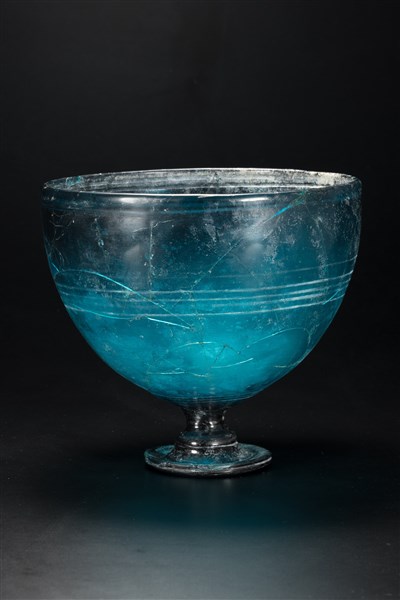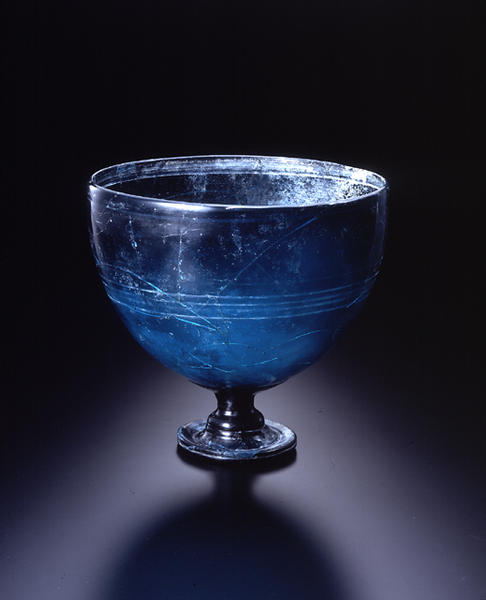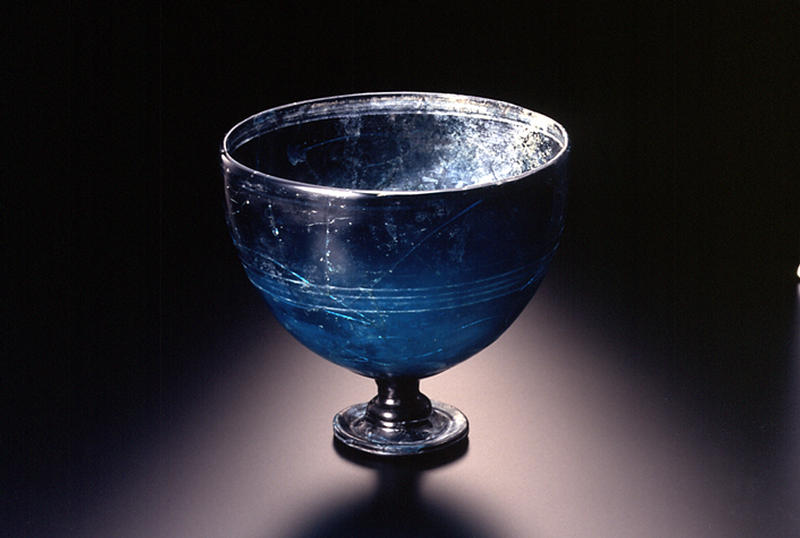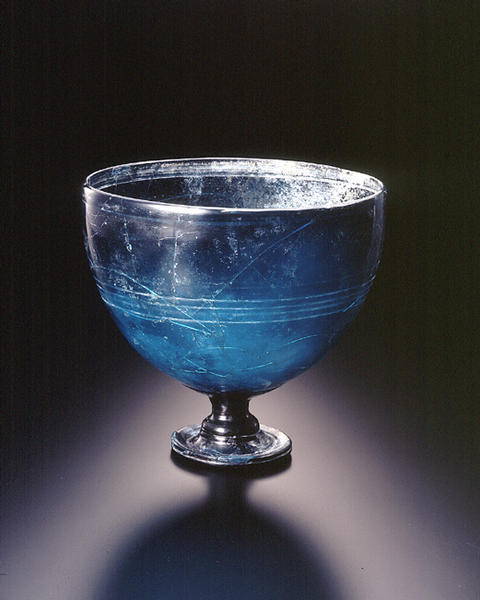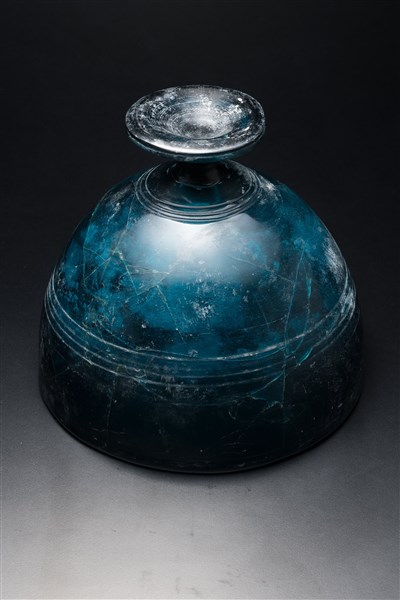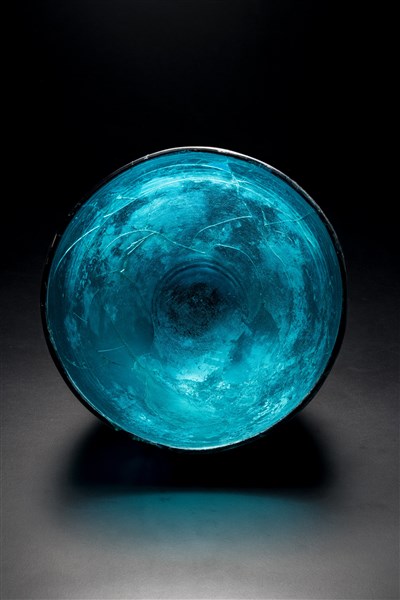脚杯
- 東地中海地域あるいはイタリア
- 1世紀
- ガラス
- H-20 D-22.4
鋳造された緑青色透明ガラスの大型脚杯。杯部は半球形。脚部は先端が外側に張り出し、中央部は深く窪んでいる。短い円筒で杯部につながる。口縁部内側に1本のやや幅広の水平な溝が彫られる。外側は杯中央部に5本、脚部付近に3本、さらに脚の張り出し部の上方に2本、突端に1本の細い水平溝が彫られている。内外面ともなめらかに仕上げられており、特に脚部には研磨痕が顕著である。
ヘレニズム時代の東地中海地域における鋳造ガラスの最古の例として、イタリア南東部にあるカノーサの墓からの出土品が知られているが、そのグループに属するとされる一連のガラス容器の中に、この作品と同じ形の脚部をもつ大型脚杯がある。このグループのガラス容器は卓越した技術と高い芸術性を備えており、高価な贅沢品であったことがわかる。アケメネス朝ペルシアのガラス容器と同じように金属器を模したと思われる形が多く、豪華な貴金属の容器と並んで貴族たちの宴席を飾ったのだろう。このような大型の脚杯は、葡萄酒を水で割るための容器であるクラテルとして使われたのかもしれない。
Catalogue Entry
Large footed cup cast from translucent bluish green glass. Cup is semi-spherical. The edges of the foot spread out and the center is deeply hollowed. A short circular cylinder connects the foot to the cup. The inner edge of the mouth rim is circled by a relatively thick horizontally carved groove. The center of the outer surface of the cup is circled by five thin, horizontal grooves, while three more of these grooves are cut on the body of the cup close to the foot, and then two more at the upper edge of the foot's expanse and one at the edge. Both the inner and outer surfaces of the cup are smoothly finished and there are particularly noticeable traces of polishing on the foot area.
Examples excavated from the Canosa tombs in southeastern Italy are the oldest known group of cast glass works from the eastern Mediterranean in the Hellenistic period, and in that series of works can be found a large footed cup which has the same shape foot as this cup. The glass vessels in the Canosa group show superior techniques and aesthetic achievement, and we know they were expensive luxury items. Many of the shapes of these items, like the glass vessels of Achaemenid dynasty Persia, were designed as copies of metallic vessel shapes, and they most likely adorned the banquet tables of the wealthy along side gorgeous precious metal vessels. This kind of large footed cup may have been used as a krater, the vessel used to mix wine with water.
解説(古代バクトリア遺宝展)
前3―前2世紀
ガラス
高20.0 cm 径22.4 cm
透明のガラス器は古くはアッシリアから見られるが、これは鋳造削り出し技法で作られたものであった。この技法はペルシャにも受け継がれたが、ヘレニズムの時代には東地中海域のガラス工房もこの影響を受け、前3世紀の後半には本作品に見られるようなギリシャ様式をもった鋳造削り出しの贅沢な器が作られるようになった。
本作品は青い透明ガラスで鋳造し、杯部は半球形、脚部は支柱が細くその下部が伏鉢状に膨らんで末端を張り出すクラテール型の器を削り出している。口縁部内側に1本、胴部外側には5本の溝を刻んでいる。この形式の器は、ワインをこの中で水などと混ぜる混酒器として使われた。
Catalogue Entry(Bac#027)
3rd‐2nd century B.C.
Glass
H. 20.0 cm, Dia. 22.4 cm
Translucent glass was first seen in Assyria, and this cup was created by the casting and carving method. This method was also continued in Persia, and influenced the glass workshops of the eastern Mediterranean during the Hellenistic period. This type of elegant cast and carved glass vessel in the Greek style was created in the latter half of the 3rd century BC.
This cup was cast from blue translucent glass and then carved into a krater type semi-circular cup with a narrow pillared foot which then swells and spreads to the edges. A single groove circles the interior of the mouth rim, while five grooves circle the outside of the torso. This type of vessel would have been used for mixing water and wine.
